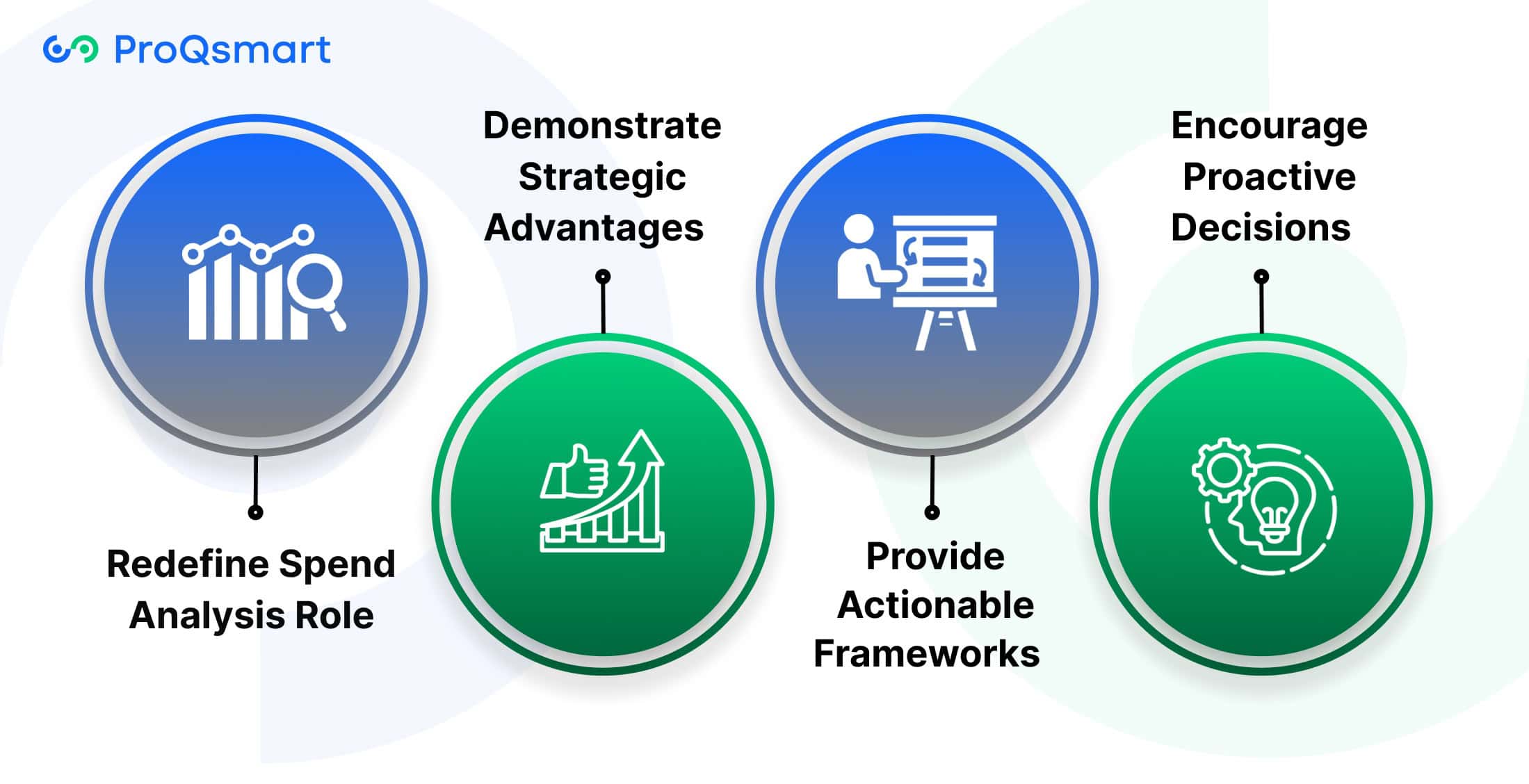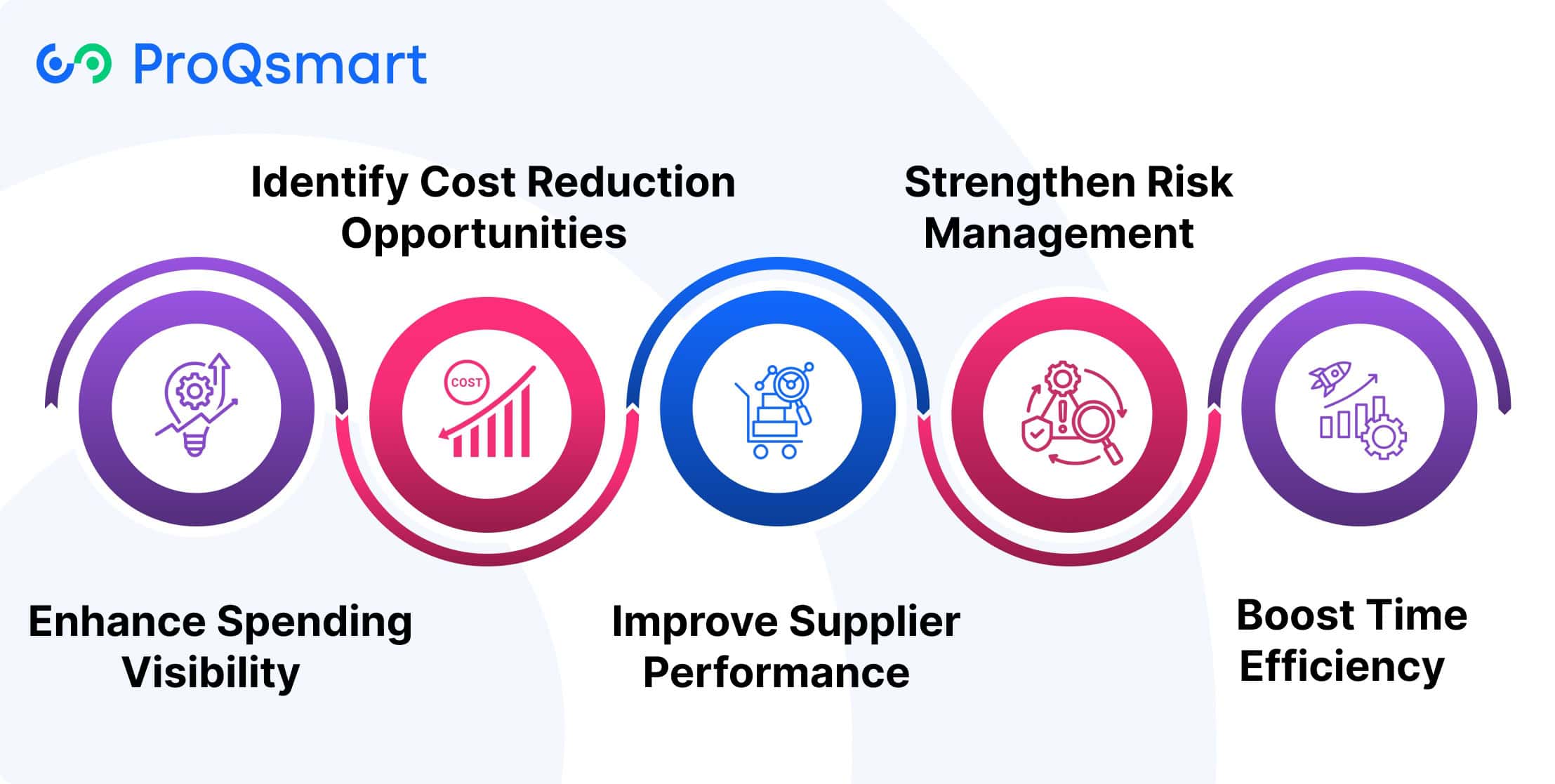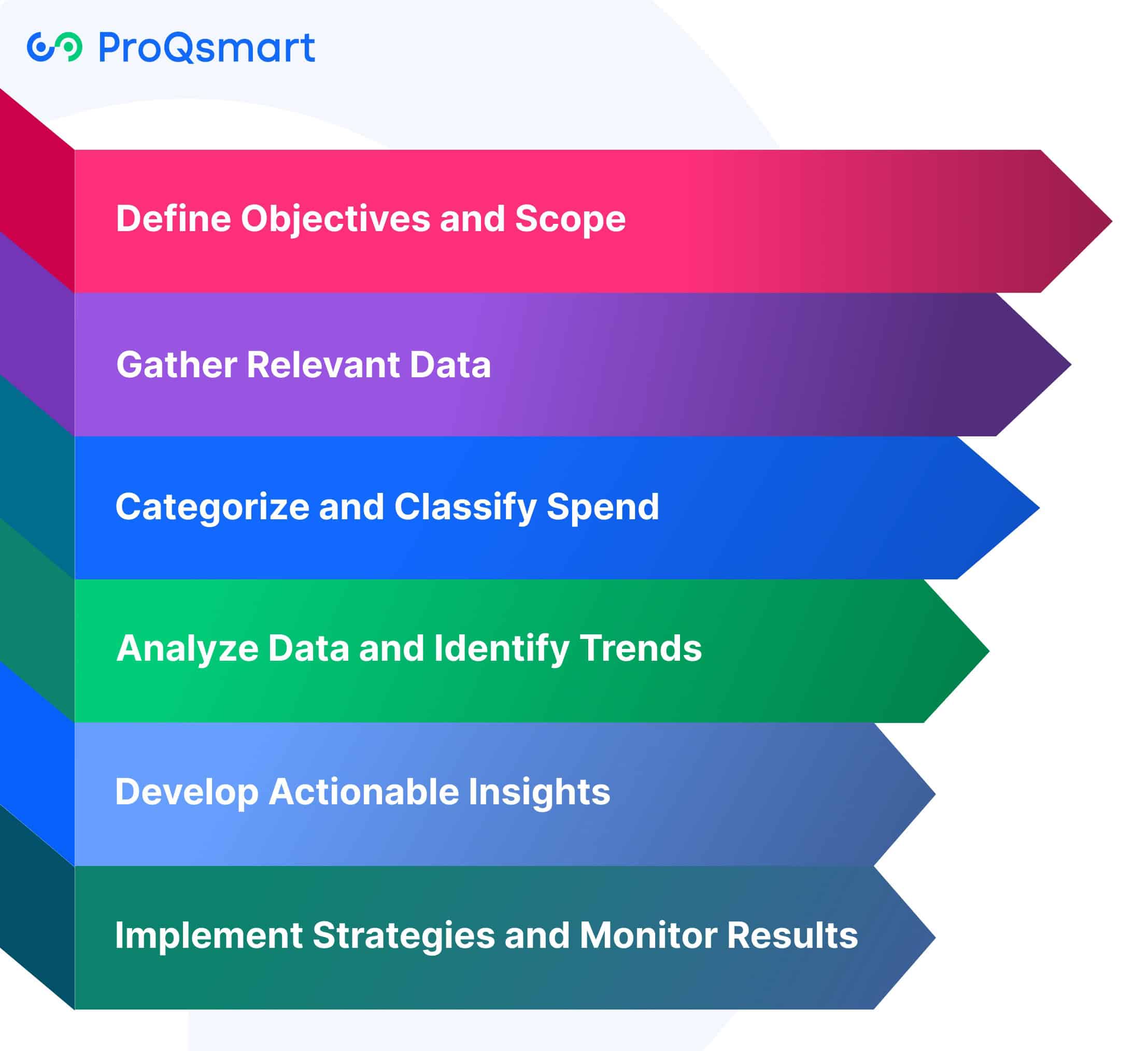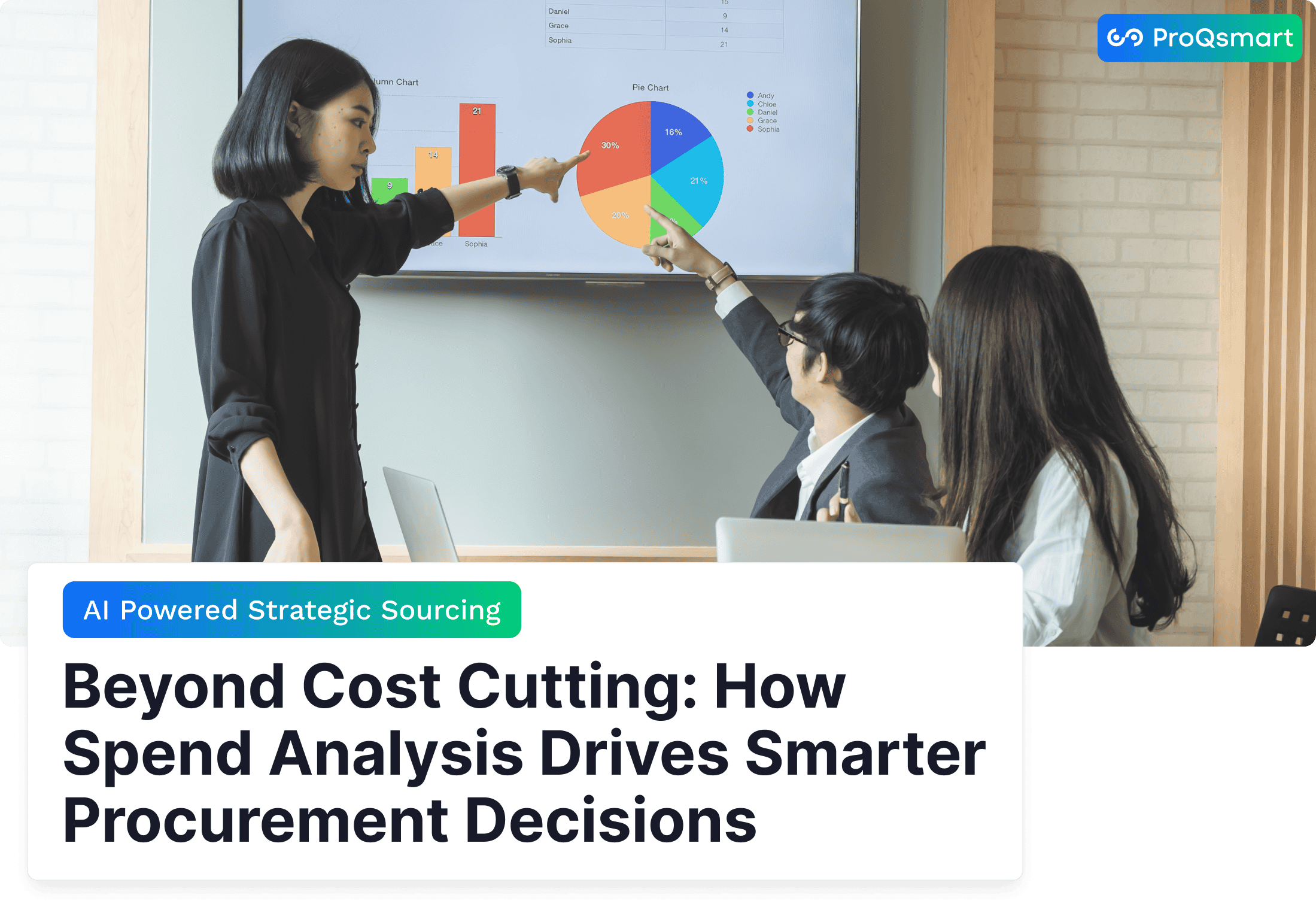Procurement teams handle vast amounts of spend data, but without the right approach, it remains untapped potential. Spend analysis is not just about identifying cost-saving opportunities—it’s about making smarter, data-driven procurement decisions.
A well-structured spend analysis helps organizations gain visibility into spending patterns, assess supplier performance, ensure contract compliance, and improve budget allocation. By leveraging this data effectively, procurement professionals can optimize sourcing strategies, strengthen supplier relationships, and enhance overall efficiency.
This article explores how spend analysis goes beyond cost-cutting to drive better procurement outcomes, reduce risks, and create long-term value.
Leverage Spend Analysis for Procurement Optimization

Spend analysis is a true foundational asset, powering smarter procurement strategies from actionable insights hidden in organizational spending data. It gives you a deeper understanding of where your money goes, helping to spot inefficiencies and find maverick spending. Furthermore, it identifies areas for potential savings and increases supplier accountability.
Besides, by identifying trends between suppliers, categories, and transactions, organizations can also improve efficiency and maximize compliance. This method allows them to create a more strategic overall procurement plan.
1. Redefine Spend Analysis Role
To maximize ROI, spend analysis needs to be seen as a strategic enabler, not a cost-cutting initiative. Its integration into the core procurement strategy empowers teams to make data-driven decisions that improve supplier relationships and long-term outcomes.
Redefining its role helps businesses to achieve deep visibility into supplier performance. Therefore, this multi-pronged approach provides a strong foundation for alignment with organizational goals and collaboration across the board.
2. Demonstrate Strategic Advantages
Indeed, the strategic insights provided by spend analysis can be a key competitive advantage. Teams can further segment suppliers and analyze category performance to uncover valuable opportunities.
They can also reduce the number of vendors to save money or re-negotiate contracts for better deals. Besides, by identifying risks, such as contract non-compliance, and opportunities for innovation, spend analysis becomes a proactive tool to ensure sustainable growth.
3. Provide Actionable Frameworks
Implementation starts with well-defined methodologies for data collection, cleansing, and analysis. Tools such as ProQsmart streamline these workflows with artificial intelligence-powered automation that assists with real-time tracking, supplier performance monitoring and compliance assurance.
Additionally, these frameworks make sure actionable insights turn into tangible outcomes like smaller vendor pools and as well as lower overall procurement costs.
4. Encourage Proactive Decisions
By adopting this proactive mindset, procurement teams can definitely start to measure and analyze data to constantly calibrate and improve processes. Moreover, making spend analysis an ongoing initiative helps organizations stay proactive and reactive to both market trends and internal organizational demand.
Long-term cost efficiency can also be achieved as organizations better align their budgets and spending through spend analysis, for example, by identifying and eliminating maverick spending.
Key Benefits of Spend Analysis

Spend analysis is one of the most critical tools available to procurement professionals looking to influence strategic decision-making and operational excellence within their organizations. By intricately analyzing spending data, organizations can identify actionable insights that provide quantifiable advantages in every aspect of procurement.
The advantages go far beyond simply driving cost savings, including increased efficiency, better supplier governance, and as well as strong risk management processes.
Enhance Spending Visibility
A comprehensive spend analysis offers a more complete picture into where the organization is spending its money, which improves transparency and accountability. Through this analysis of spending patterns, procurement teams can see a clearer picture of how and where their resources are being allocated.
For example, knowing which categories represent the most spend helps you target your efforts, plan strategically, and align preparedness budgets. Moreover, visualization tools such as dashboards and graphs quickly turn complex data into understandable visuals. Therefore, they improve the communicability of findings and empower better informed decision making.
Identify Cost Reduction Opportunities
Taking a hard look at spending data exposes inefficiencies and hidden costs that present opportunities for savings. For instance, finding duplicate suppliers or finding opportunities to consolidate purchases can save money.
Besides, by leveraging tools like ProQsmart, which automates workflows and aligns procurement with budgets, organizations can correspondingly implement targeted strategies to maximize cost savings without compromising quality or compliance.
Improve Supplier Performance
Spend analysis is the key to determining supplier performance. Besides, by keeping an eye on metrics like delivery times and on-time contract performance, procurement teams can build better relationships with suppliers.
With ProQsmart, it’s easier for businesses to monitor supplier performance, allowing them to negotiate better terms and work together more efficiently to achieve mutually beneficial outcomes.
Strengthen Risk Management
Proactive risk management has never been more important than it is today with increasingly complex supply chains. Spend analysis provides insights into potential risks, like an overreliance on one supplier or lack of adherence to regulations.
With ProQsmart’s AI-driven insights, businesses can also proactively manage risks. They connect organizations to accurate, auditable sourcing data and encourage the building of resilient, local supply chains.
Boost Time Efficiency
By automating spend analysis, gathering and processing data is expedited, saving procurement teams valuable time. Technology solutions have shortened procurement cycles—from issuing and managing e-tenders to monitoring and tracking budgets in real-time.
With this efficiency, organizations can also shift resources away from manual processes and toward more strategic initiatives, improving overall productivity and speed of decision-making.
Steps to Implement Spend Analysis

A formal spend analysis procedure with these key ingredients is critical for any organization looking to manage costs and improve the efficiency of their procurement processes. By dividing the process into manageable, clearly defined steps, organizations can discover hidden opportunities for robust cost savings and operational efficiencies.
Here, we take a look at the key steps in implementing spend analysis—focusing on the importance of collaboration, accuracy and technology-driven solutions.
Define Objectives and Scope
Step 1 – Before you start analyzing any data, you need to set a goal and determine what the scope of your spend analysis will be.
Step 2 – Zero in on your objectives. Focus on finding cost-saving opportunities, increasing the performance of suppliers, or better aligning spending with organizational objectives.
Narrow the scope to focus on certain categories, such as direct or indirect spend. Thus, this targeted approach allows for a more data driven, strategic analysis. Well-defined objectives provide direction, ensuring efforts are aligned with strategic priorities.
Gather Relevant Data
Data accuracy is the key to spend analysis. Gather spend data from all possible sources, such as invoices, purchase orders and supplier contracts. Inconsistent data collection across an organization can quickly erode the integrity of the process, making it essential to roll that data up into a centralized system.
ProQsmart, for instance, makes this step easy by automating data cleansing and management, so that all data is accurate, consistent and auditable.
Categorize and Classify Spend
Additionally, organizing data into standardized categories ensures that data can be uniformly reported, providing greater visibility into spending patterns. Think of programs such as spend analysis software to automate and aw well as simplify classification.
For instance, categorizing direct materials separately from indirect spend can reveal opportunities to negotiate better supplier terms or consolidate purchases.
Analyze Data and Identify Trends
Use analytical tools to analyze spend data to identify trends. Benchmarking data against established key performance indicators (KPIs) provides a metric for determining the efficiency and effectiveness of procurement.
For instance, spend analysis of supplier performance data might uncover areas of underperformance against contracted terms, or areas where the organization can save money by changing suppliers. Tools like ProQsmart leverage AI to find the highest priority actionable insights, powering more evidence-based decision-making.
Develop Actionable Insights
Insights are only as good as the action they inspire. Focus on the most important findings, such as those that will have the biggest impact by cutting down on maverick spending or enhancing supplier relationships.
For example, if the analysis shows that the government is spending a lot on items of low priority, changing procurement policies can lead to immediate savings. Overall, ongoing tracking and analysis helps ensure that your strategies stay effective in the long run.
Implement Strategies and Monitor Results
Develop concrete strategies based on these insights, like renegotiating existing supplier contracts or consolidating purchases for certain commodity items. Without regular monitoring, it will be impossible to gauge the success of these strategies.
With ProQsmart’s real-time tracking capabilities, organizations can ensure procurement activities stay within budget, providing transparency and accountability to help organizations comply with budgets. Tweak approaches where necessary to react to performance feedback and changing business requirements.
Best Practices for Effective Spend Analysis
Ensure Data Accuracy
Quality data is what makes up the foundation of truly reliable spend analysis. Mistakes or irregularities in data can result in deeply misled conclusions, which affects decisions directly. Start by ensuring your data sources are accurate by cross-referencing records from multiple departments and combining data through a systematic process.
For instance, mapping spend data from different systems in advance can surface differences early on. By using technology, like with strategic procurement software, further automates the data cleansing and classification process, ensuring they’re correct. Therefore, this is where ProQsmart shines, streamlining processes by automatically tracking and creating auditable data on sourcing activity.
Use Appropriate Tools
Taking a more effective approach with the right spend analysis tool maximizes efficiency and opens the door to more in-depth insights. Advanced spend analytics solutions, such as those embedded in ProQsmart, break down complex spend patterns, allowing procurement analysts to track trends in real time. These tools reduce the need for manual effort and increase efficiencies.
Collaborate with Stakeholders
Involving stakeholders from each department broadens the analysis and includes diverse perspectives to further strengthen your findings. With each category, procurement teams can collect important feedback on spending behaviors to deliver a holistic view.
Integration collaboration tools, like ProQsmart’s real-time collaboration platform, remove silos, get everyone on the same page, and as well as promote informed decision-making that leads to impactful strategies.
Focus on Actionable Insights
The real measure of success for spend analysis is turning those findings into actionable steps. For example, focusing on maverick spending trends can often result in the introduction of tighter controls, protecting budgets from unnecessary spending.
ProQsmart’s AI-driven platform is a leader at identifying these kinds of patterns, giving businesses the tools they need to reduce risk and maximize savings.
Regularly Review and Update Analysis
Spend analysis is not a one-time effort. These regular reviews help the data remain up to date as well as realigned to your evolving business requirements. Correspondingly companies must plan for regular reviews to improve methodologies and measure the success of spend analysis.
Combined with ProQsmart’s budget-driven tracking and supplier performance monitoring, businesses can stay connected with real-time insights without the hassle of manual updates.
How Spend Analysis Impacts on Procurement Decisions
Spend analysis is not just about reducing expenditures; it is a crucial part of the spend analysis process that serves as a leading indicator and strategic tool to enhance procurement efficiency and provide greater value. By utilizing a spend analytics solution, organizations can unlock actionable insights from their spend data, which refine sourcing decisions, enhance supplier relationships, and support long-term growth.
Therefore, this process provides unmatched transparency into corporate spend activities, allowing procurement teams to identify inefficiencies such as maverick spending. Furthermore, it enables teams to automate workflows, driving better compliance and cost optimization.
Segment Suppliers and Uncover Category Insights
With robust spend data, procurement teams can easily identify and classify suppliers into different tiers and evaluate suppliers’ performance by category. Knowing who your biggest suppliers are is crucial.
Getting a good look at what you’ve been buying in the past helps discover places to save with volume discounts and identify areas of non-compliant spending. This segmentation further aids in supplier risk management, focusing on critical vendors to ensure they are delivering value and performance as expected and required.
Build a Structured Framework for Spend Analysis
Spend analysis really comes to life with organization. First, identify all procurement activity for initial data collection, then cleanse data to remove any errors.
Only through the analysis of this data can teams see the inefficiencies or trends, like a lack of urgency or a procurement backlog. Finally, automate translating those insights into action—whether that’s recommending that procurement renegotiate contracts or consolidate suppliers—to rewire procurement workflows for speed and efficiency.
Leverage ProQsmart for Automation and Predictive Insights
With ProQsmart’s cutting-edge AI, we make spend analysis clear and actionable. Its automation capabilities streamline the classification of spending, supplier performance analysis, and the creation of predictive insights to help procurement make better decisions.
Besides, by removing manual errors and delays, ProQsmart delivers spend analysis that keeps procurement decisions compliant, transparent, and focused on measurable cost savings.
Future Trends in Spend Analysis
As procurement becomes more strategic, spend analysis is becoming more advanced. That movement is driven by the power of new technologies and an increasing demand for fiscal transparency. Today, organizations are using the latest smart tools to understand spending better, maximize their dollars, and make informed, data-driven decisions.
These trends speak to the fact that spend analysis is truly evolving from a reactive, tactical process into a proactive strategic financial management tool.
Predictive Spend Analytics
Predictive spend analytics is proving to be the true game-changer, as it empowers organizations to predict future spending patterns with incredible accuracy. By utilizing a spend analysis tool, organizations can analyze historical spending data to better predict demand and recognize seasonal spending patterns, which ultimately enhances their procurement strategies.
With predictive tools, manufacturers can align their materials-stock more effectively. This method cuts down on storage expenses and helps keep optimal inventory on hand to feed production. Moreover, insights like these inform strategic sourcing decisions, such as when to make strategic bets on price increases to secure long-term contracts at advantageous rates through a detailed spend analysis.
Deploying real-time analytics really enhances this capability. They deliver real-time visibility into cash flow and expenses, so leadership teams can also react quickly to shifts with data-driven decisions. Integrated platforms such as ProQsmart offer the greatest return on investment by leveraging AI-driven predictive analytics alongside seamless collaboration tools for effective spend management.
Enhanced Data Visualization
Data visualization is key when it comes to presenting spend analysis findings in a way that is clear and actionable. With advanced visualization tools, procurement teams can also transform complex datasets into intuitive charts and dashboards, making critical information accessible to stakeholders.
For instance, visualizing spend categories can allow finance leaders to quickly and easily pinpoint areas where the organization can cut costs or improve efficiency. Thus, these tools further enhance communication, increasing the ability for cross-functional teams to come together and make an impact.
ProQsmart’s transparency-focused solutions help make this process easier by automating workflows and as well as delivering real-time insights. Similarly, superior visualization enhances analysis and enables organizations to achieve total visibility into their spending. This is important because 65% of finance professionals consider not enough control over spend a key obstacle to growth.
Staying Ahead of Trends
By adopting these emerging trends, organizations position themselves to be more competitive, more agile, and ultimately more fiscally responsible. When spend analysis is combined with other business tools such as payroll or customer relationship management (CRM) platforms, for example, enterprises gain 360° visibility across their spending.
This comprehensive view identifies overlooked savings opportunities, process improvements, and enables spending in line with strategic objectives. Thus, the need for these types of capabilities is only going to increase, making it all the more important to be at the forefront of the procurement space.
Conclusion
Spend analysis provides the foundation and tools to make more strategic decisions in procurement. Whether you’re looking to target cost savings, enhance supplier performance, or develop more effective strategies to drive your business forward, it’s empowering. Break down all of your spend data to get a clear picture of where your dollars are spent. This knowledge will get you more bang for your buck. This process improves your operational efficiency and improves your competitiveness in a demanding market.
With AI-powered tools like ProQsmart, spend analysis becomes faster, more accurate, and actionable. ProQsmart automates spend classification, risk assessment, and predictive analytics, helping procurement teams make data-driven decisions with confidence.
Ready to take control of your procurement strategy? Book a demo with ProQsmart today and discover how smarter spend analysis can transform your business.




